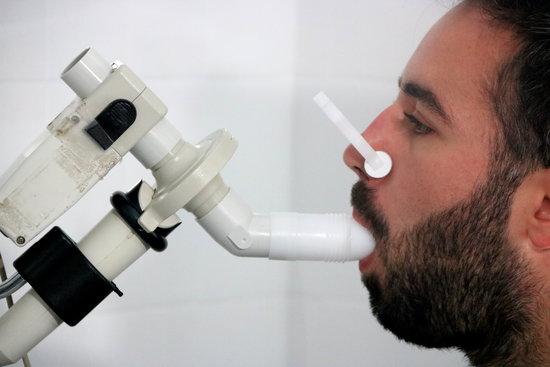One in three new childhood asthma cases caused by air pollution
New European study led by Barcelona institute says keeping to WHO air quality guidelines would reduce incidence by 11% per year

Keeping to air quality guidelines from the World Health Organization (WHO) would prevent 11% of new childhood asthma cases in Europe, while reducing air pollution to the lowest levels so far recorded would prevent a third of such new cases.
These are the main conclusions of a new health study headed by the Barcelona Institute for Global Health (ISGlobal), which has just been published in the European Respiratory Journal.
After estimating the burden of childhood asthma in 18 European countries and more than 63.4 million children, the study concludes that a large number of cases may be attributable to air pollution exposure.
The study attributes 33% of new annual cases of childhood asthma to PM2.5 particles (particulate matter with a diameter of less than 2.5 micrometers), 23% to nitrogen dioxide (NO2) particles, and 15% to black carbon (BC) particles.
Census data from 18 countries
The research used census data from 18 European countries and took incidence rates of childhood asthma from the Global Burden of Disease (GBD) database. Exposure to the different pollutants was calculated using a harmonized European statistical model.
To estimate the burden of childhood asthma, the researchers looked at two scenarios: the first based on the maximum air pollution levels in the WHO's air quality guidelines, while the second referenced the lowest air pollution levels recorded by 41 previous studies.
Analyzing the first scenario revealed that 66,600 childhood asthma cases (11% of the total) could be prevented every year if the 18 countries studied complied with the WHO air quality guideline for PM2.5. It was estimated that complying with the NO2 guideline would prevent 2,400 cases of childhood asthma per year (0.4% of the total).
Analysis of the second scenario showed that if the 18 countries were able to meet the lowest levels of PM2.5 recorded by previous studies, it would prevent over 190,000 annual cases (33%). The number of new cases that could be avoided per year if the lowest levels of NO2 and BC were achieved would be 135,000 (23%) and 89,000 (15%), respectively.
The estimates are generally in line with two previous studies in the UK, which found that the percentage of annual incident childhood asthma attributable to NO2 was 22%. Another study estimated that four million new paediatric asthma cases could be attributable to NO2 pollution annually, 64% of which occur in urban centres.
Lead researcher calls for "urgent action"
The study's lead author, Haneen Khreis, who is an associated researcher at the Center for Advancing Research in Transportation Emissions, Energy, and Health at the Texas A&M Transportation Institute, says this new analysis is “a call for urgent action.”
“Largely, these impacts are preventable and there are numerous policy measures which can reduce the ambient levels of, and children’s exposures to, outdoor air pollution. We can and should do something about it,” added the researcher.
The 18 European countries covered in the study are Austria, Belgium, Denmark, Finland, France, Germany, Greece, Hungary, Ireland, Italy, Lithuania, the Netherlands, Norway, Portugal, Spain, Sweden, Switzerland and the United Kingdom.